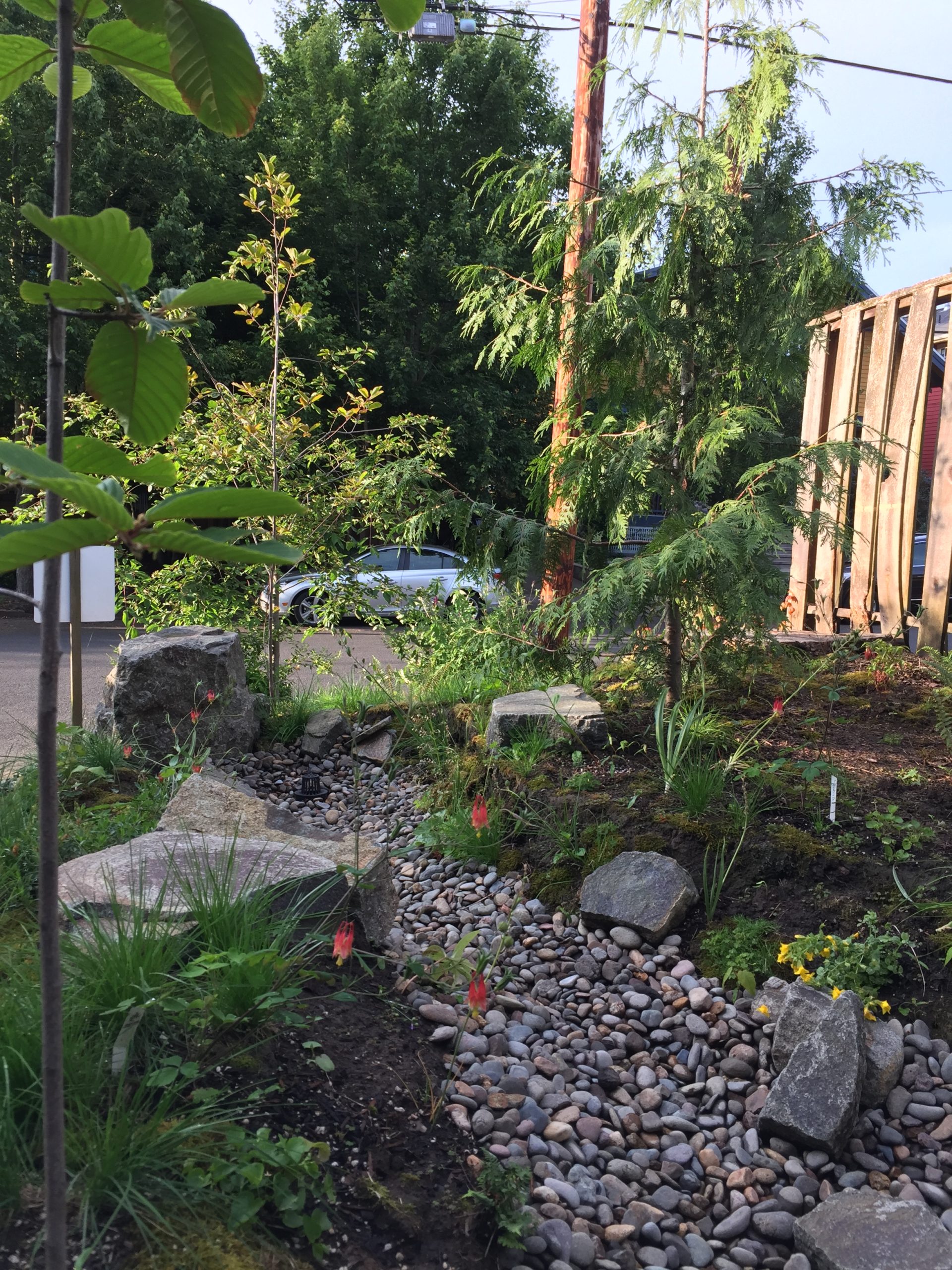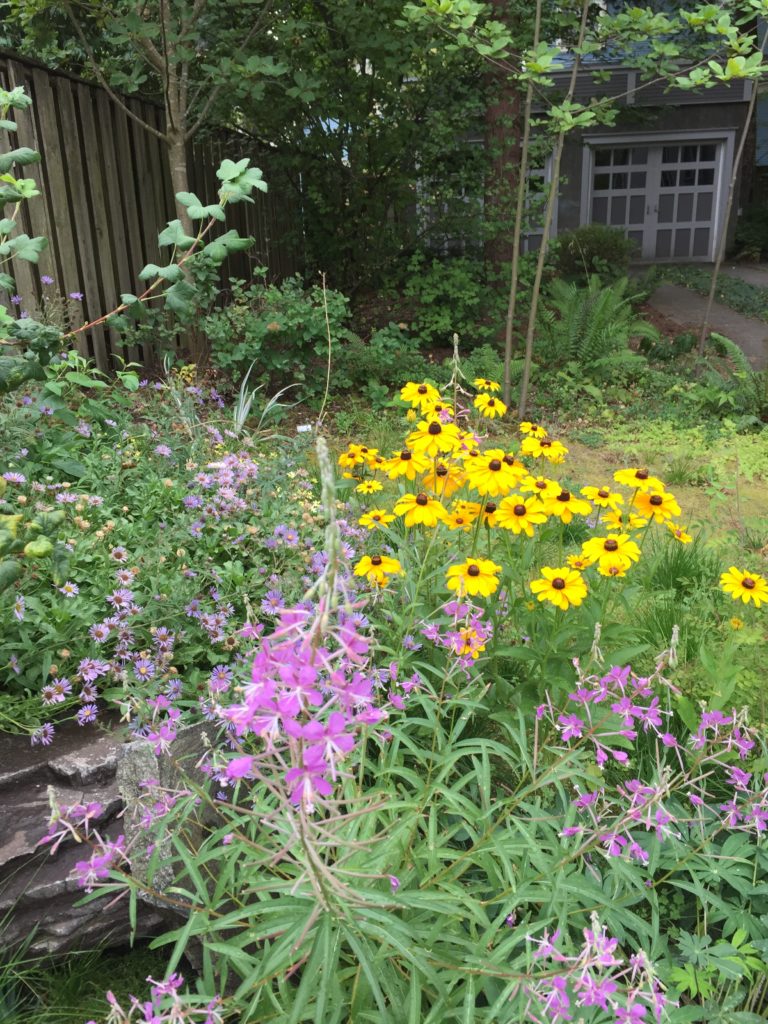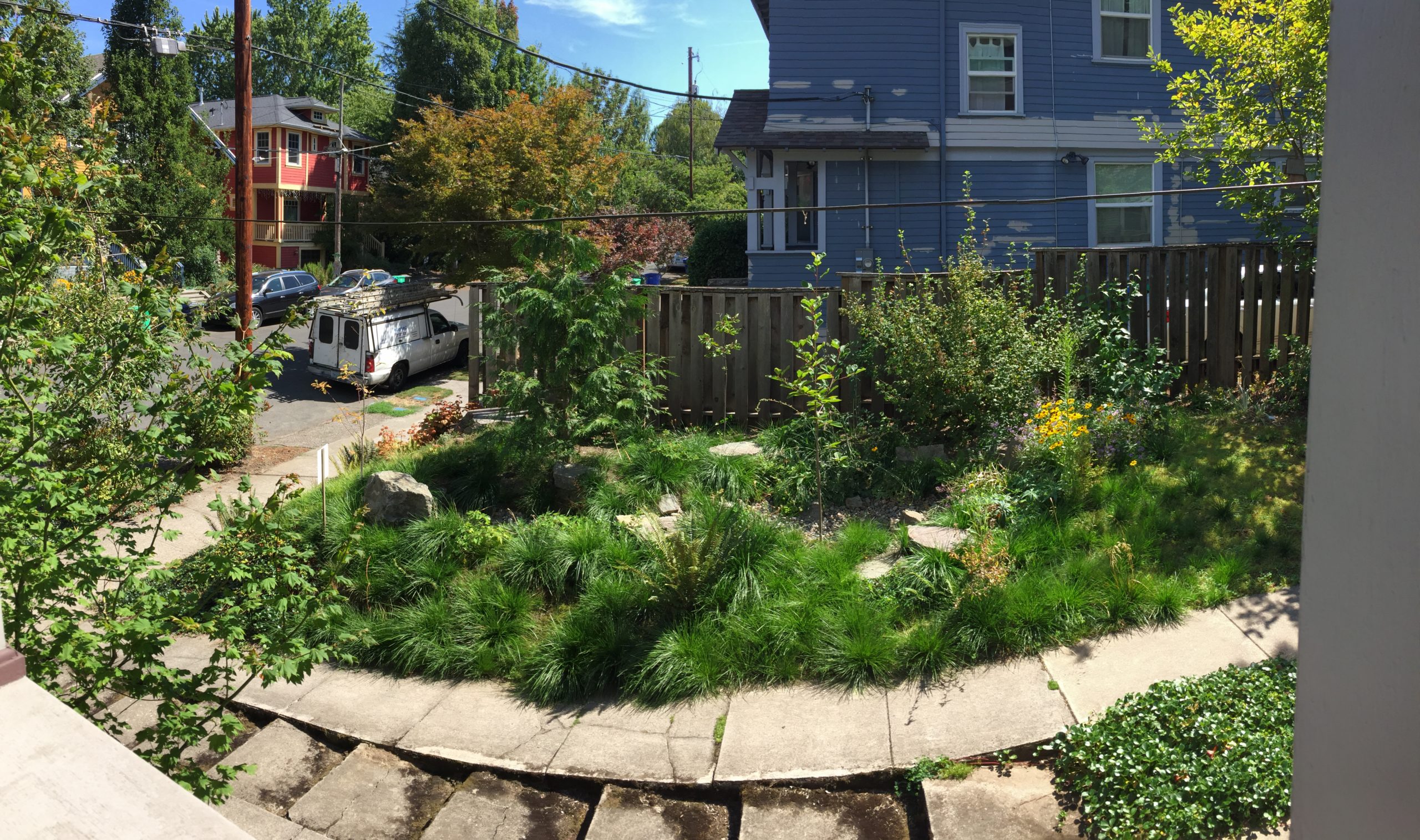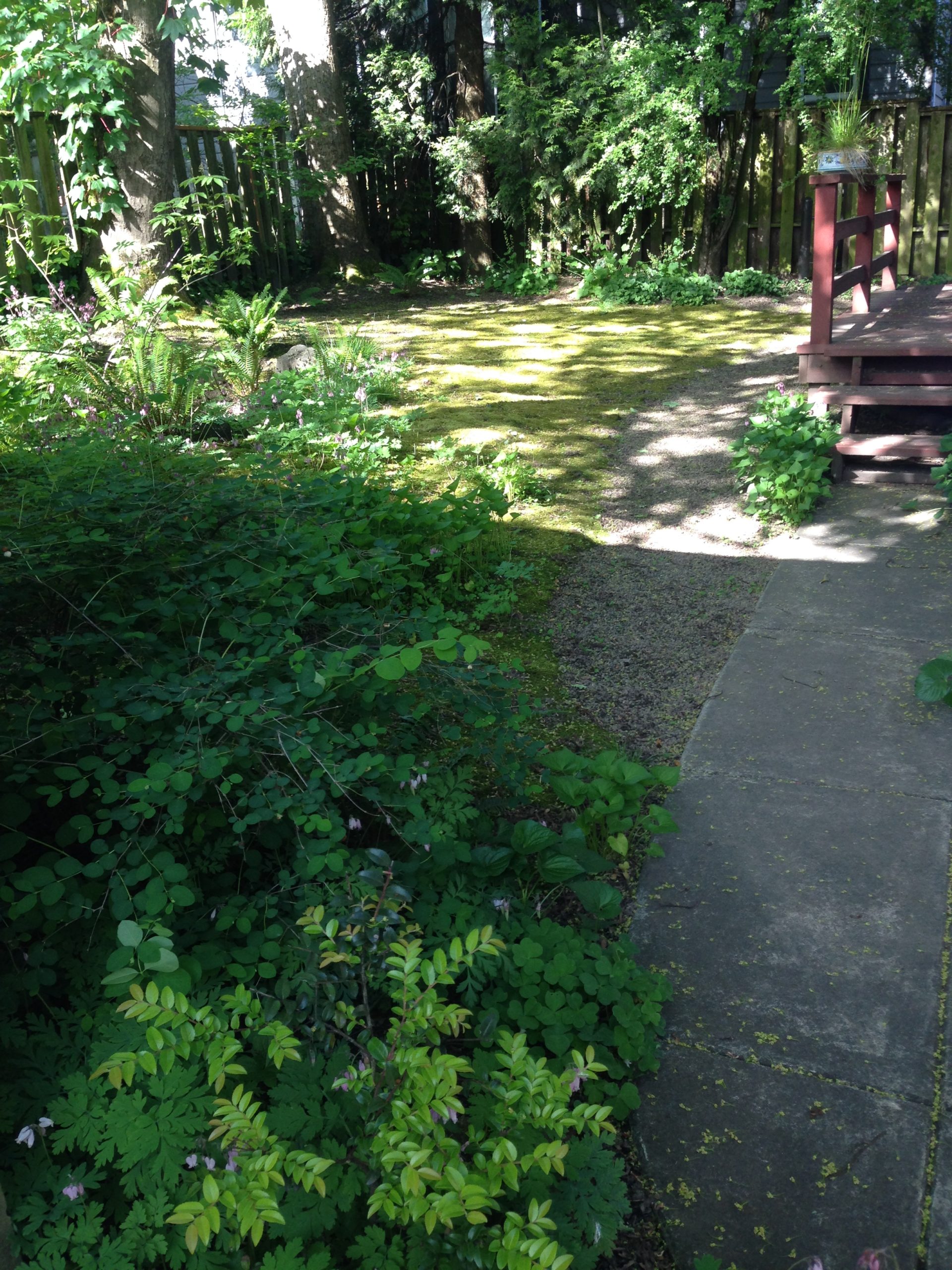Site Information: Paolo’s sloped habitat in the Buckman neighborhood has part sun to shady conditions.
What inspired you to enroll in the Backyard Habitat Certification Program?
My enthusiasm for native plants was sparked in San Francisco in the late 90s. My husband and I participated in the restoration of Kite Hill Park, one of three remaining native grasslands in the city. This project introduced me to habitat restoration.
How would you describe your habitat?
I would describe my habitat as a walk along a trail in the Columbia Gorge. It has a wild yet uncluttered design, with two rain gardens and a dry well as focal points. My garden does not have a lot of full sun, only in the parking strips, so I completely planted it with Douglas spirea, Indian blanket flower, strawberries, cascara, and other ornamentals.
What are your top three favorite native plants and why do you love them?
I love cascara because it is a true bird magnet. The birds just seem to love them, like a fuzzy blanket in Winter.
Red flowering currant is also so beautiful, the first shrub to flower in late Winter, and it also marks the return of the Anna’s hummingbird.
Camas is my favorite Willamette Valley wildflower. It reminds me of a deep royal blue star with tiny points of yellow pollen. A flower of such incredible beauty that it will make you forget your troubles if you look at it long enough. The bumble bees are quite fond of them also.
What changes have you observed as a result of creating habitat?
The frequency and quantity of native birds have increased dramatically over time. The garden is now about 13 years old. Frequent visitors are bushtits, yellow-rumped warblers, robins, and chickadees, who just don’t fly in and out but stay a while, jumping up and down between garden layers searching for food.
Albeit my efforts to encourage neighbors to enroll in the program and create habitat connectivity, progress has been slow. I am trying new ways to advocate for the program in the hopes of attracting new participants.
What were the two most significant challenges you encountered while creating habitat, and how did you address them?
The issues with my garden were mainly due to human activity:
My neighbors’ pets: When plantings were sparse, I had an ongoing issue with people allowing their dogs to trample the beds. That seems to have abated in the last few years, now that plants are more established and the garden has a more substantial presence. My neighbors’ free-roaming cats are currently preying on the birds, attempting to climb the cascara trees to get at them. It is very upsetting that people still ignore the problem of their outdoor cats hunting wildlife.
Pollution: This is a more recent issue, with increased use of fireplaces, woodstoves, and fire pits. Also, outdoor smoking and heavily scented dryer fumes make it difficult to work outside.
What resources did you find especially helpful?
I pretty much learned by trial and error, which I actually do not recommend. I think it would have been helpful to take a class on how to grow and care for natives. Things like being informed of their habits (actual size at maturity, invasive qualities, pruning methods, and other useful information).
The one book I frequently reference is “Plants of the Pacific Northwest Coast,” Lone Pine Publishing.
I also found the advice of the staff at Bosky Dell Nursery, West Linn, helpful.
How do you enjoy your Backyard Habitat throughout the different seasons? What are its highlights in each season?
It is actually my tenants who enjoy the garden now. When I list an apartment for rent, I include information (and pictures) about the garden. I have noticed an increased interest in the garden by my tenants in recent years, who use apps like Cornell’s Merlin to identify the visiting birds. It is very satisfying to be able to provide this experience for others to enjoy. Native gardens are good for business!
What part of your backyard habitat are you most proud of?
I am most proud of the front garden beds and the parking strips, where I often see birds flit back and forth. In the Summer, I get the sensation of being enveloped by nature. I feel that parking strips are not given the attention they deserve, underutilized and car-focused. Before I got started, I had them dug out to reduce the soil line. This had the unintended benefit of creating a type of bioswale that collects water during heavy rains! People who turn their parking strips into a garden oasis are special!!
Is there anything else you’d like to add about your journey?
I often dream about how different my daily walks would be if everyone showed love and concern for habitat restoration. There would be vast numbers of birds, raptors soaring above, butterflies flitting everywhere, bees buzzing. A true paradise.
In Buckman, Ladd’s Addition, and Colonial Heights, Backyard Habitat signs are scarce. But thank you so much to all of you who have them! It lifts my spirits every time I see a sign and encourages me to keep up my efforts to help our wild friends.









